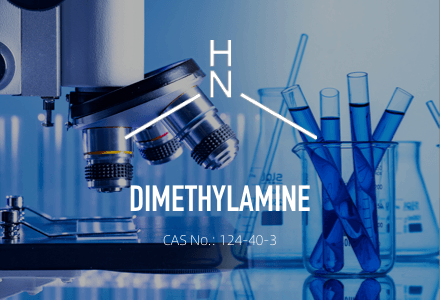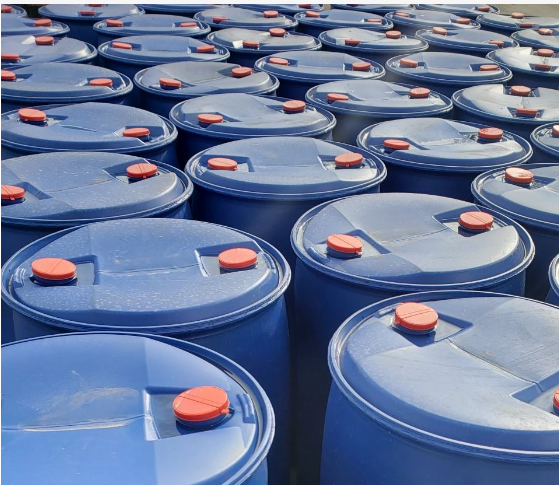- All
- Product Name
- Product Keyword
- Product Model
- Product Summary
- Product Description
- Multi Field Search
Contact Us
: Fenghui South Road, Dev.Zone of
High-Tech Ind.,Xi’an, China 710075
dimethylamine/CAS 124-40-3
-
dimethylamine
-
C2H7N
-
DRUM and ISO TANK
-
Colorless transparent liquid
-
124-40-3
| Availability: | |
|---|---|
| CAS NO. | 124-40-3 |
| Alias | 2M solution in Methyl alcohol |
| Molecular Formula | C2H7N |
| Appearance | Colorless transparent liquid |
| ASSAY | 99.8%,60%,40% |
| Package | DRUM and ISO TANK |
| PackingGroup | II |
| UN NO. | 2924 |
| HazardClass | 3 |
| Technical Data Sheet | |
| Dimethylamine | ≥99 |
| Methylamine | ≤0.10 |
| Trimethylamine | ≤0.05 |
| Ammonia | ≤0.03 |
| Appearance | Colorless transparent liquid |
| Methods of production | ||||
| Methanol ammoniation method. It is obtained by reacting methanol with ammonia at a reaction temperature of 425 ℃, a reaction pressure of 2.45 MPa, and a catalyst of α- Al2O3, methanol ammoniation Chemicalbook gas-phase catalytic reaction to obtain crude products of monomethylamine, dimethylamine, and trimethylamine, and then subjected to pressure distillation to obtain single component, relatively pure industrial products of monomethylamine, dimethylamine, and trimethylamine, respectively. CH3OH+NH3→CH3NH2+H2O 2CH3OH+NH3→(CH3)2NH+2H2O 3CH3OH+NH3→(CH3)3N+3H2O | ||||
| APPLICATION | |||
| Used as raw materials for the production of drugs, dyes, pesticides, leather hair removal agents, rubber vulcanization accelerators, rocket propellants, etc.Dimethylamine is an important intermediate of pesticides, which can be used to prepare fungicides such as thiram, thiram, thiram, thiram, thiram, thiram, thiram, thiram, thiram, pirimicarb, chlordimetham, dimethoprim, chlordimetham, carbofuran, herbicides such as chlortoluron, isoproturon, cyclozinone, fluuron, etc.It is mainly used as raw material for rubber vulcanization accelerator, leather depilatory, medicine (antibiotic), pesticide (thiram, chlordimeform, methomuron and other herbicides), textile industry solvent, dye, explosive, propellant and organic intermediates such as dimethylhydrazine, N, N-Chemicalbook dimethylformamide. Dimethylamine consumed in the production of dimethylformamide accounts for 44.7% of the total consumption, pesticide production accounts for 38.9%, and pharmaceutical production accounts for 16.4%. | |||
| CAS NO. | 124-40-3 |
| Alias | 2M solution in Methyl alcohol |
| Molecular Formula | C2H7N |
| Appearance | Colorless transparent liquid |
| ASSAY | 99.8%,60%,40% |
| Package | DRUM and ISO TANK |
| PackingGroup | II |
| UN NO. | 2924 |
| HazardClass | 3 |
| Technical Data Sheet | |
| Dimethylamine | ≥99 |
| Methylamine | ≤0.10 |
| Trimethylamine | ≤0.05 |
| Ammonia | ≤0.03 |
| Appearance | Colorless transparent liquid |
| Methods of production | ||||
| Methanol ammoniation method. It is obtained by reacting methanol with ammonia at a reaction temperature of 425 ℃, a reaction pressure of 2.45 MPa, and a catalyst of α- Al2O3, methanol ammoniation Chemicalbook gas-phase catalytic reaction to obtain crude products of monomethylamine, dimethylamine, and trimethylamine, and then subjected to pressure distillation to obtain single component, relatively pure industrial products of monomethylamine, dimethylamine, and trimethylamine, respectively. CH3OH+NH3→CH3NH2+H2O 2CH3OH+NH3→(CH3)2NH+2H2O 3CH3OH+NH3→(CH3)3N+3H2O | ||||
| APPLICATION | |||
| Used as raw materials for the production of drugs, dyes, pesticides, leather hair removal agents, rubber vulcanization accelerators, rocket propellants, etc.Dimethylamine is an important intermediate of pesticides, which can be used to prepare fungicides such as thiram, thiram, thiram, thiram, thiram, thiram, thiram, thiram, thiram, pirimicarb, chlordimetham, dimethoprim, chlordimetham, carbofuran, herbicides such as chlortoluron, isoproturon, cyclozinone, fluuron, etc.It is mainly used as raw material for rubber vulcanization accelerator, leather depilatory, medicine (antibiotic), pesticide (thiram, chlordimeform, methomuron and other herbicides), textile industry solvent, dye, explosive, propellant and organic intermediates such as dimethylhydrazine, N, N-Chemicalbook dimethylformamide. Dimethylamine consumed in the production of dimethylformamide accounts for 44.7% of the total consumption, pesticide production accounts for 38.9%, and pharmaceutical production accounts for 16.4%. | |||









